 From Watchland, the Genevan estate where Franck Muller is based, you are able to look out across the calm blue waters of Lake Geneva to the far bank, and in the distance gaze up at the white peak of Mont Blanc. In this postcard setting, Watchland is an open expanse of chalet-style buildings designed by the Swiss architect Edmond Fatio, punctuated with manicured gardens that remind of the calm grounds of Versailles. This year, Franck Muller announced that Watchland had been renovated extensively, with two new buildings constructed in the same style as the rest of the estate, which dates back to 1905. These additional buildings are to accommodate around 420 Franck Muller watchmakers, artisans and operational employees to work in a single location, improving efficiency, and also allowing the brand to be more reactive to market demands. The new buildings give the brand an additional 16,000 square metres at their disposal, making it possible to manufacture components, assemble the watches and finish them all in one place. Franck Muller still have a number of other production sites around Switzerland which will stay in operation, so the project has been more of an expansion than a relocation. In true Franck…
From Watchland, the Genevan estate where Franck Muller is based, you are able to look out across the calm blue waters of Lake Geneva to the far bank, and in the distance gaze up at the white peak of Mont Blanc. In this postcard setting, Watchland is an open expanse of chalet-style buildings designed by the Swiss architect Edmond Fatio, punctuated with manicured gardens that remind of the calm grounds of Versailles. This year, Franck Muller announced that Watchland had been renovated extensively, with two new buildings constructed in the same style as the rest of the estate, which dates back to 1905. These additional buildings are to accommodate around 420 Franck Muller watchmakers, artisans and operational employees to work in a single location, improving efficiency, and also allowing the brand to be more reactive to market demands. The new buildings give the brand an additional 16,000 square metres at their disposal, making it possible to manufacture components, assemble the watches and finish them all in one place. Franck Muller still have a number of other production sites around Switzerland which will stay in operation, so the project has been more of an expansion than a relocation. In true Franck…
The post Welcome to Watchland, the story of the Franck Muller manufacture appeared first on Time and Tide Watches.
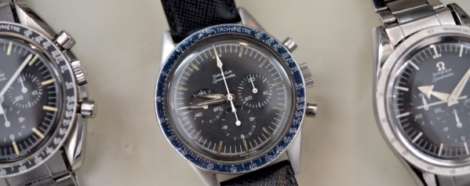
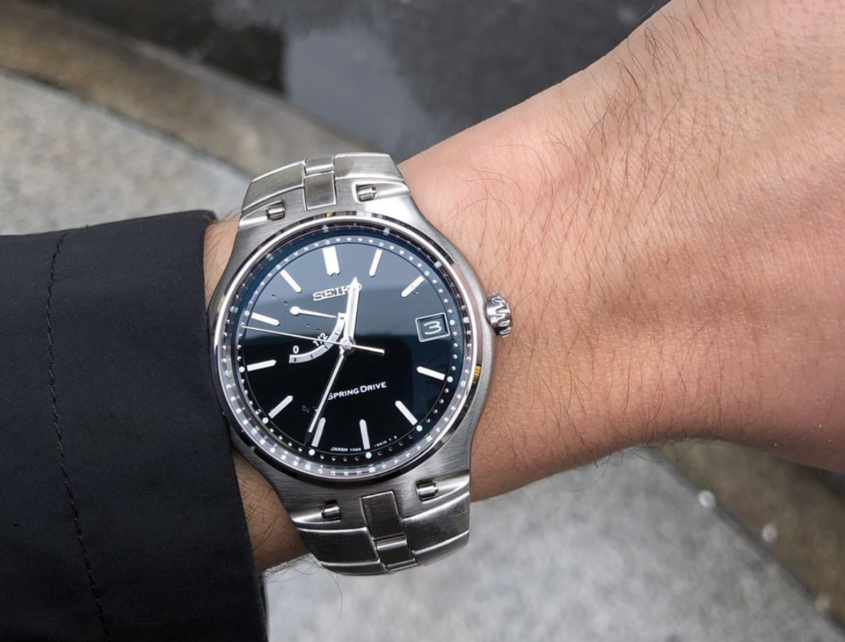 The turn of the century gave us Y2K hysteria, the first use of the Euro as currency and the Spring Drive movement. That’s right, in 1999 we saw one of the most remarkable innovations in watchmaking of the last half-century, with the release of the first-ever Spring Drive powered watch, the Seiko SBWA001. This is the story of a reader by the name of Zach’s pursuit of one of these fairly rare watches that marked a new beginning for the Japanese manufacturer. In June last year I was fortunate enough to attend the spectacular HSNY (Horological Society of New York) lectures in honour of the 20th anniversary of the proprietary Spring Drive movement. As an owner of an SBGA211 “Snowflake” and big fan of the Grand Seiko brand, I was excited at the prospect of really digging into the history of the engine of one of my favourite timepieces. For a complete overview of Spring Drive if you are not familiar already, it is best to hear from the experts themselves and I feel obligated to direct you to the lecture itself by Joseph Kirk, Brand Curator and National Trainer for Grand Seiko Corporation of America. I caution any sceptics…
The turn of the century gave us Y2K hysteria, the first use of the Euro as currency and the Spring Drive movement. That’s right, in 1999 we saw one of the most remarkable innovations in watchmaking of the last half-century, with the release of the first-ever Spring Drive powered watch, the Seiko SBWA001. This is the story of a reader by the name of Zach’s pursuit of one of these fairly rare watches that marked a new beginning for the Japanese manufacturer. In June last year I was fortunate enough to attend the spectacular HSNY (Horological Society of New York) lectures in honour of the 20th anniversary of the proprietary Spring Drive movement. As an owner of an SBGA211 “Snowflake” and big fan of the Grand Seiko brand, I was excited at the prospect of really digging into the history of the engine of one of my favourite timepieces. For a complete overview of Spring Drive if you are not familiar already, it is best to hear from the experts themselves and I feel obligated to direct you to the lecture itself by Joseph Kirk, Brand Curator and National Trainer for Grand Seiko Corporation of America. I caution any sceptics…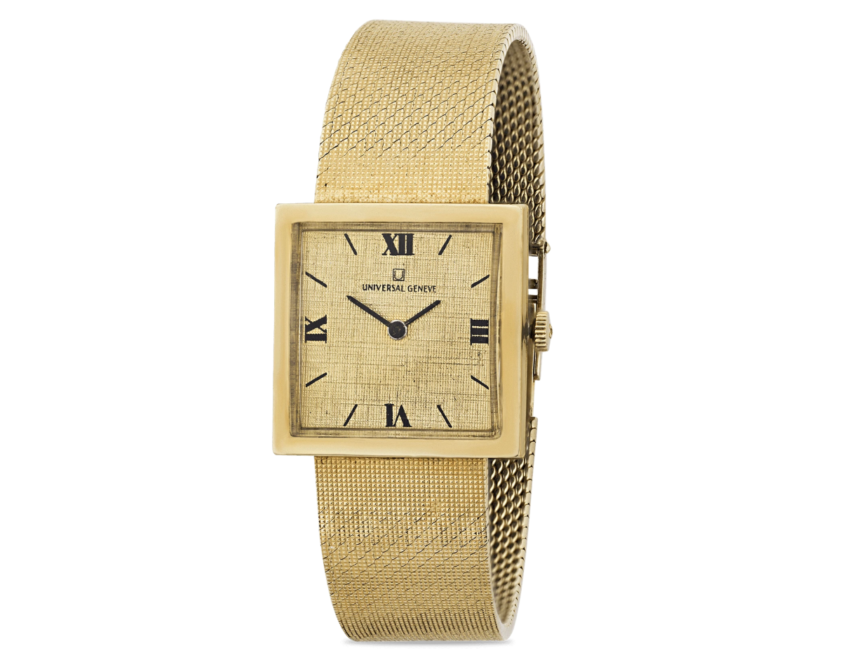 You may have heard the news that Tom Hanks and his wife Rita Wilson contracted coronavirus while filming the untitled Elvis Presley biopic in Australia; they are both reportedly recovering well, but Elvis fanatics will be champing at the bit for the production to ramp back up. It, like life as we know it, has been postponed. While the film is on hold, fans now have the chance to own one of The King’s personal timepieces – one that has had a torrid, and fairly low-rent ride through various auctions over the years, never achieving a fraction of the value of either, more prized timepieces. Such as this Omega, which was sold by Phillips in 2018, and took the crown for the highest price ever achieved by an Omega at US$1,812,318, an eye-watering amount, and an indication of how far some fans will go to bring a part of musical history into their collections. But this result does not explain the case of a yellow gold Universal Genève owned by Elvis, which has been up for sale at auction no less than four times, and is now for sale again for $34,500 USD plus premiums. Currently being offered by M.S. Rau…
You may have heard the news that Tom Hanks and his wife Rita Wilson contracted coronavirus while filming the untitled Elvis Presley biopic in Australia; they are both reportedly recovering well, but Elvis fanatics will be champing at the bit for the production to ramp back up. It, like life as we know it, has been postponed. While the film is on hold, fans now have the chance to own one of The King’s personal timepieces – one that has had a torrid, and fairly low-rent ride through various auctions over the years, never achieving a fraction of the value of either, more prized timepieces. Such as this Omega, which was sold by Phillips in 2018, and took the crown for the highest price ever achieved by an Omega at US$1,812,318, an eye-watering amount, and an indication of how far some fans will go to bring a part of musical history into their collections. But this result does not explain the case of a yellow gold Universal Genève owned by Elvis, which has been up for sale at auction no less than four times, and is now for sale again for $34,500 USD plus premiums. Currently being offered by M.S. Rau…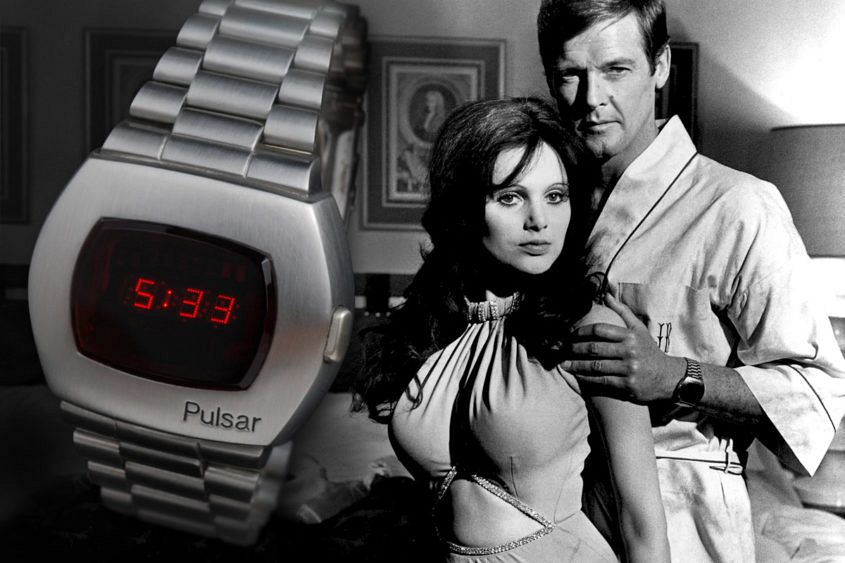 Editor’s note: This is part 2 of a long read from the second edition of NOW Magazine, which you can pick up here. If you missed Part 1, you can find it right here. The story so far is a space race between America, Switzerland and Japan as they sought to manufacture battery powered quartz watches at scale. On Christmas Day in 1969, Seiko beat both the Americans and the Swiss to the quartz punch when they released the gold-cased Astron. But while quartz was now on the scene, digital watches were en vogue, even gracing the wrist of James Bond when Roger Moore wore a Hamilton Pulsar P2 in the 1973 film Live And Let Die. Digital watches with either LED (Light Emitting Diode) or later LCD (Liquid Crystal Display) time displays also opened the doors for electronics companies such as Hewlett-Packard, Motorola and Texas Instruments to make watches, further squeezing the Swiss watchmaking companies. By 1978, it was all biting. The Swiss watch industry was in very serious trouble, and the move was made to restructure the industry, creating a scenario straight out of a Management Consulting textbook. This environment of necessarily aggressive mergers and acquisitions saw the rise of…
Editor’s note: This is part 2 of a long read from the second edition of NOW Magazine, which you can pick up here. If you missed Part 1, you can find it right here. The story so far is a space race between America, Switzerland and Japan as they sought to manufacture battery powered quartz watches at scale. On Christmas Day in 1969, Seiko beat both the Americans and the Swiss to the quartz punch when they released the gold-cased Astron. But while quartz was now on the scene, digital watches were en vogue, even gracing the wrist of James Bond when Roger Moore wore a Hamilton Pulsar P2 in the 1973 film Live And Let Die. Digital watches with either LED (Light Emitting Diode) or later LCD (Liquid Crystal Display) time displays also opened the doors for electronics companies such as Hewlett-Packard, Motorola and Texas Instruments to make watches, further squeezing the Swiss watchmaking companies. By 1978, it was all biting. The Swiss watch industry was in very serious trouble, and the move was made to restructure the industry, creating a scenario straight out of a Management Consulting textbook. This environment of necessarily aggressive mergers and acquisitions saw the rise of…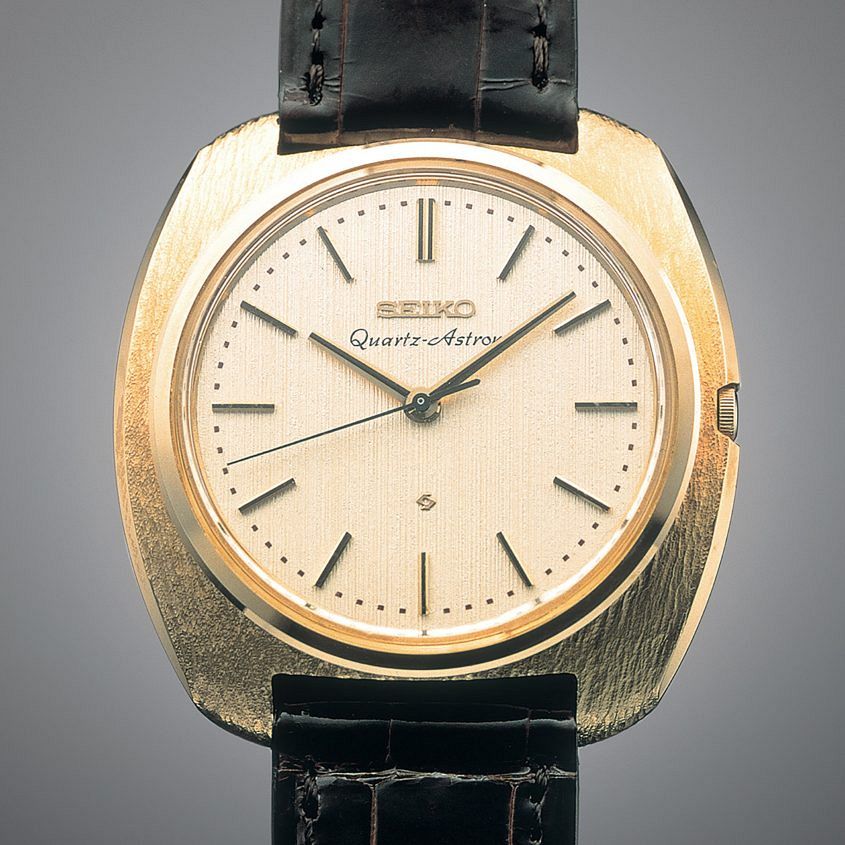 The development of quartz technology essentially removed the need for the Swiss mechanical watchmaking industry. And yet, both the Swiss and quartz watches are still around. More than that, they’re sharing the bed. And getting more adventurous. Half a century ago, a watch was released that was powered by a battery, and cost the equivalent of a family car. The Seiko Astron spelled the dawn of a new age in watchmaking, one that was moving the industry out of the hands of the solitary craftsman and onto the factory floor. In any industry that has operated the same way for generations, abrupt changes in technology always have winners and losers. While the Swiss and Japanese watch industries were neck and neck in their development of quartz technology towards the end of the 1960s, Seiko was the first to market with their Astron. Regardless of which team you were rooting for, it was a turning point in the history of timekeeping: “the single most important development of the 20th century in horology”, according to renowned collector and author James Dowling. Over the following decades, it would plunge the Swiss watch industry into turmoil. The automated global marketplace forced many companies involved…
The development of quartz technology essentially removed the need for the Swiss mechanical watchmaking industry. And yet, both the Swiss and quartz watches are still around. More than that, they’re sharing the bed. And getting more adventurous. Half a century ago, a watch was released that was powered by a battery, and cost the equivalent of a family car. The Seiko Astron spelled the dawn of a new age in watchmaking, one that was moving the industry out of the hands of the solitary craftsman and onto the factory floor. In any industry that has operated the same way for generations, abrupt changes in technology always have winners and losers. While the Swiss and Japanese watch industries were neck and neck in their development of quartz technology towards the end of the 1960s, Seiko was the first to market with their Astron. Regardless of which team you were rooting for, it was a turning point in the history of timekeeping: “the single most important development of the 20th century in horology”, according to renowned collector and author James Dowling. Over the following decades, it would plunge the Swiss watch industry into turmoil. The automated global marketplace forced many companies involved…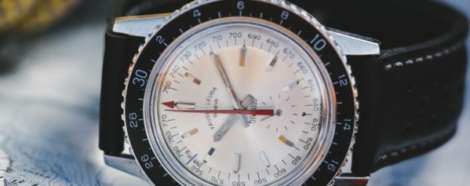
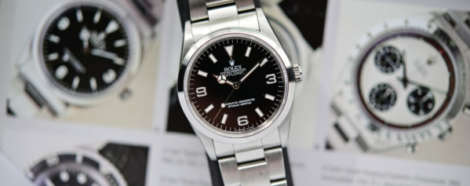
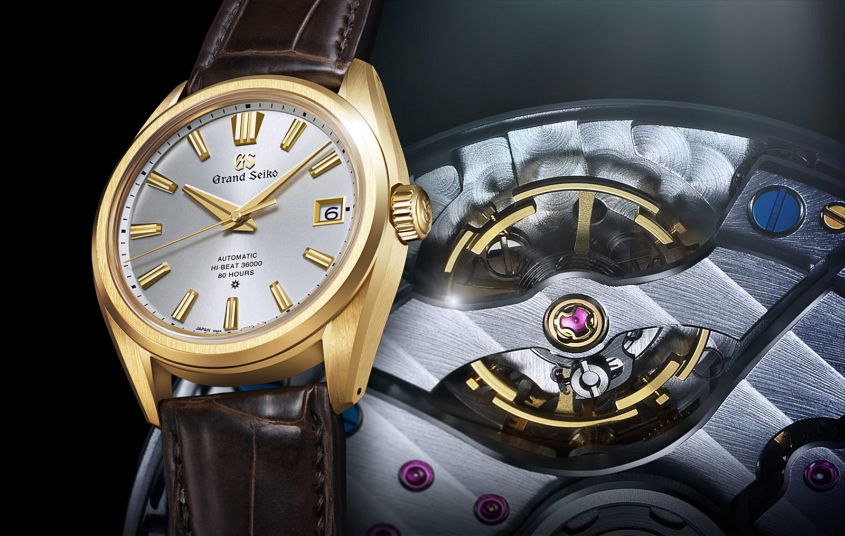 It’s a pretty big deal for any watch company to launch an entirely new movement – let alone two new movements at once. But this is what Grand Seiko has done to mark its 60th anniversary. The choice of year is significant: in Western culture, a 60th is not considered particularly special (half and quarter centuries are more celebrated), but in Japan, where the zodiac calendar is based on a 60-year cycle, it is hugely significant. A 60th anniversary signals renewal, revitalisation and rebirth. So, beyond encapsulating the expertise accumulated by Grand Seiko over the past 60 years, these two new movements are a strong statement of intent. They represent each of Grand Seiko’s two pillars: Calibre 9SA5 is a traditional mechanical movement, while Calibre 9RA5 is a Spring Drive movement. These are entirely new movements, with every element developed and produced in-house and designed to last for decades as the foundation for a whole new generation of watches. To understand their place in the Grand Seiko story, let’s look at the genesis of each in turn. As a reminder, when Grand Seiko was created in 1960 – Genzo Kintaro, the founder’s eldest son was Chairman of Seiko, and Shoji…
It’s a pretty big deal for any watch company to launch an entirely new movement – let alone two new movements at once. But this is what Grand Seiko has done to mark its 60th anniversary. The choice of year is significant: in Western culture, a 60th is not considered particularly special (half and quarter centuries are more celebrated), but in Japan, where the zodiac calendar is based on a 60-year cycle, it is hugely significant. A 60th anniversary signals renewal, revitalisation and rebirth. So, beyond encapsulating the expertise accumulated by Grand Seiko over the past 60 years, these two new movements are a strong statement of intent. They represent each of Grand Seiko’s two pillars: Calibre 9SA5 is a traditional mechanical movement, while Calibre 9RA5 is a Spring Drive movement. These are entirely new movements, with every element developed and produced in-house and designed to last for decades as the foundation for a whole new generation of watches. To understand their place in the Grand Seiko story, let’s look at the genesis of each in turn. As a reminder, when Grand Seiko was created in 1960 – Genzo Kintaro, the founder’s eldest son was Chairman of Seiko, and Shoji… From Watchland, the Genevan estate where Franck Muller is based, you are able to look out across the calm blue waters of Lake Geneva to the far bank, and in the distance gaze up at the white peak of Mont Blanc. In this postcard setting, Watchland is an open expanse of chalet-style buildings designed by the Swiss architect Edmond Fatio, punctuated with manicured gardens that remind of the calm grounds of Versailles. This year, Franck Muller announced that Watchland had been renovated extensively, with two new buildings constructed in the same style as the rest of the estate, which dates back to 1905. These additional buildings are to accommodate around 420 Franck Muller watchmakers, artisans and operational employees to work in a single location, improving efficiency, and also allowing the brand to be more reactive to market demands. The new buildings give the brand an additional 16,000 square metres at their disposal, making it possible to manufacture components, assemble the watches and finish them all in one place. Franck Muller still have a number of other production sites around Switzerland which will stay in operation, so the project has been more of an expansion than a relocation. In true Franck…
From Watchland, the Genevan estate where Franck Muller is based, you are able to look out across the calm blue waters of Lake Geneva to the far bank, and in the distance gaze up at the white peak of Mont Blanc. In this postcard setting, Watchland is an open expanse of chalet-style buildings designed by the Swiss architect Edmond Fatio, punctuated with manicured gardens that remind of the calm grounds of Versailles. This year, Franck Muller announced that Watchland had been renovated extensively, with two new buildings constructed in the same style as the rest of the estate, which dates back to 1905. These additional buildings are to accommodate around 420 Franck Muller watchmakers, artisans and operational employees to work in a single location, improving efficiency, and also allowing the brand to be more reactive to market demands. The new buildings give the brand an additional 16,000 square metres at their disposal, making it possible to manufacture components, assemble the watches and finish them all in one place. Franck Muller still have a number of other production sites around Switzerland which will stay in operation, so the project has been more of an expansion than a relocation. In true Franck…